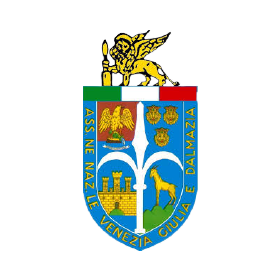Professional journalist, ex-director of the Veneto branch of Italian national television, and head of the “Est Ovest” (“East West”) national radio program, Sergio Tazzer is one of the leading experts on Venezia-Giulia issues of the last century, given the coverage his program has always given and continues to give on the subject. With his own style of journalistic integrity and objectivity, Tazzer has written a book whose second title is “The defense of the Italian identity in Istria, Fiume and Dalmatia”. Starting from the traumatic events of the Yugoslav occupation and subsequent exodus of the Italian population, he reconstructs the complex and often painful post-war period of those Italians who were left as a minority in those ceded territories, tightly controlled by Tito’s regime, and subject to constant ideological pressures and denationalization.
The book begins with the excesses of the foibe, the Allied bombings of Zara and the exodus, passing to the second post-war period and the “counter-exodus” of the groups from Monfalcone who dreamed of a socialist society and whose dreams, and lives, came to an end in Tito’s Goli Otok prison camp. It continues on to the delicate reconstruction of an associative fabric that, while still under the iron-handed regime of Belgrade, allowed the Italian community to be recognized as such, albeit hardly tolerated.
In well-laid out chapters, Tazzer brings the reader back to the climate of the 1960s and 1970s and through to the fall of the Berlin Wall in 1989 and the break-up of Yugoslavia, which then led to the rekindling of Balkan ethnic hatred and the wars of the 1990s. Throughout all this political upheaval and the establishment of Slovenia and Croatia as independent states, in which nationalistic intolerances have yet to be removed, the Italian community finds itself in the position of challenging the future, in a situation of European integration that is the only way for it to ensure its survival.
Tazzer’s study ends at 1991, the year of Croatian and Slovenian independence. (A basic timeline in the appendix takes the reader through to 1998). Noteworthy is census information from 1991, showing that a considerable and surprising percentage of the local population declares itself to be Italian.
Following is an excerpt, taken from the chapter “Italians on the Margins”.
p.c.h.
Sergio Tazzer, “Tito and the Italians who Remained”
Goriziana Publishing House, Gorizia, 2008
230 pages, 20.00 euros
Almost immediately, Yugoslav nationalism began to show its worst side, with a whole series of violent excesses, both spontaneous and, above all, organized, to the detriment of everything that appeared to be Italian, from the institutions to the language used in road signs, from seen bilingualism to spoken bilingualism.
Fitzroy Maclean, a British founder of the SAS who parachuted onto the island of Curzola in 1943, with the job of acting as the official go-between with Tito’s men, told that he was taken to Tito’s headquarters on the island, an “ancient Venetian palazzo” He observed right away that, in the entry hall, the” lion of Saint Mark, symbol of Venice, had been decapitated, work of an over-zealous partisan, who had wanted to celebrate the overthrowing of Mussolini by destroying the symbol of a much-older Italian dominating force.”
Many, too many, were the changes, in substance and in form, which were wrought by the Croatian and Slovenian authorities in their efforts to annihilate any still-visible Italian presence in Istria, Fiume and Dalmatia. Names of cities, burghs, streets and businesses, even people’s names, were rendered Slavic. The majority of names ending in “ch”, considered Italian, were transcribed in official registers and on documents with only an accented Slavic “c”, without the consent of the person involved. (Tazzer cites the historian Guido Rumici).
An example: a man named Felice Giugno received his new identity card, and discovered that his name was now Srecko Lipanj, a Croatian translation of his first and last names.
And in Albona, the street named after Giuseppe Verdi was changed overnight to Ulica Jospi Zeleni, also a direct translation.
Besides blatant bad treatment, these and countless other examples showed ignorance and disrespect.
Anything Italian that could be cancelled, deleted, covered, eliminated, was. There was even a movement to stop the publication of the Italian-language newspaper, “La Voce del Popolo”, which had its offices in Fiume and had been established by the Popular Citizens’ Committee for Liberation.
Without problems, in Pola the “Il Nostro Giornale” newspaper was closed down.
With the excuse that few Italians were now left, cultural circles and clubs were closed. From Zara to Lussino, from Cherso to Pisano, from Umago to Abbazia, from Montana to Fasana, Fianona, Laurana and the mining center of Arsia.
Those few cultural circles left running experienced a total change of leadership.
It was no laughing matter: being Italian had already become desperately hard.
Sergio Tazzer




